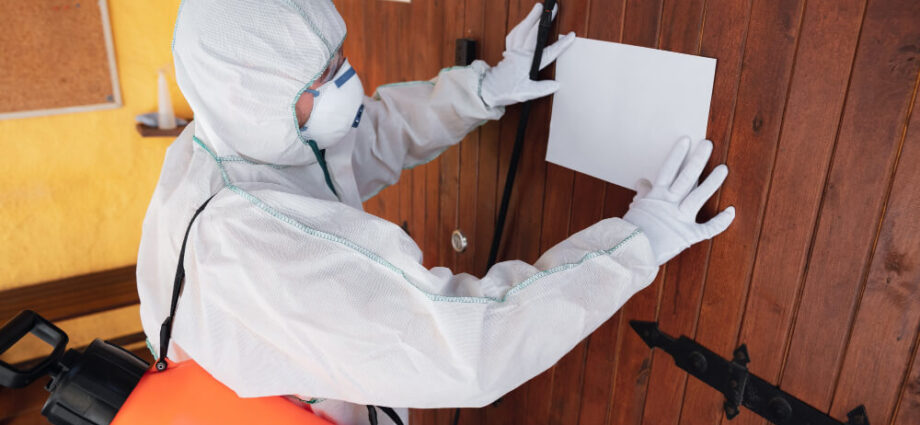Without question, termites, also known as “silent destroyers,” are the most destructive pest to a house and property. Due to their sneaky nature, you are likely to suffer massive damage before realizing you are infested. Therefore, recognizing the signs of infestation early with proper pest control termite treatment can save you thousands of dollars in damage. In this article, we’ll go through five essential aspects to help you detect these elusive insects early and easily with local termite specialists.
Mud Tubes and Termite Shelter Tubes:
One of the many ways termites have been able to perfect is by building mud tubes. It is an architectural achievement of these efficient builders. These structures are narrow passageways, roughly the width of a pencil. Termites build them using a combination of soil, saliva, and feces. The tubes act as roadways for these tiny but destructive insects as they travel to and fro from the nest and their food source. The tubes allow them to move without being prey to predators or substances. These mud tubes can help you identify termites quickly. They are usually built along the foundation of your house, outside walls, or crawl spaces and basements. Pay special attention to places where wood and soil meet, as termites often build the passageway between wooden structures and their dwelling. Inspect such areas regularly, particularly after rain or during the rainy season.
Wood Damage and Hollow Sounds:
While termites are known for being voracious eaters that consume the cellulose present in wood, they are also masters of disguise. Termites leave painted or unharmed surfaces to hide their burrows while tunneling through wood. This unseen destruction can hazard the building’s basic structural foundation. You can undertake a basic visual assessment by tapping on any wooden surfaces in your house. If you hear a sound that is hollow, papery, or squeaky instead of a solid, dull thud, you should have heard from sturdy wood. This may indicate termite infestation. Furthermore, you can pinpoint termite harm to blistering or peeling paint, floors that are buckling or saggily, or seeing an area of your home’s exposed wooden ground that appears to be blossoming or dissolving.
Swarmers and Discarded Wings:
Termite swarmers, or alates, are also referred to as reproductive termites, which require proper pest control termite treatment. These insects emerge from established colonies in order to mate with each other and establish their own colonies. During swarming season, termite swarmers might be confused with ants, owing to their straight antennae, equal-sized wings, and thicker waists. After mating, the termite swarmers, unlike ants, drop their wings, leaving rows of winged termite bodies as the only confirmation of their presence.
An indication that there is a termite colony in the vicinity is the discovery of swarmers inside. Being light attracted animals, they may dart about windows or light fixtures since mating season always occurs in the spring or early winter. Likewise, you may someday see wings lying about the window sills or floors. Since after the termites mate, they establish new colonies instantly. Therefore, identify and relay information across to the nearest termite specialists without wasting a minute.
Termite Droppings (Frass):
Termite droppings, also referred to as frass, are small, light-colored pellets that resemble sawdust and are commonly discovered around termite nests or feeding areas. Flowing from termite digestive products. Termite droppings look different depending on the variety of termites and the type of timber consumed. Frass from dry wood termites usually comes in the shape of tiny, hexagonal pellets, while subterranean termites pass wet, mud-like droppings.
Frass accumulation is a strong sign that active termites are not somewhere close away. Wood-to-soil places discovered in places such as cockpits or beneath the building are typical termite encroachment areas because termites burrow into the wood to access it. Concentrated feces, pips, or even small piles near wooden spots or places where termites have colorized to get in your house must raise a co the first. This way, the home provider can provide a powerful treatment while contracting Pest pressure against termites.
Sagging Floors or Ceilings:
More severe infestations result in further weakening of the building, presenting imminent dangers to the occupants. Termites invade and consume wooden structures in a building, including beams, joists, and studs. Eventually, the floors may develop a dipping tendency, while the ceiling forms visible sagging and, in worst-case scenarios, cracks. Such changes in the building structure are dangerous in humid areas prone to moisture. The conditions in these areas accelerate termite breeding and weaken wooden structures even further. Whenever there is dipping or visible sags or instability in the ceiling or floor, there is an urgent need to fix the problem.
Such failures weaken the building further, risking complete collapse, hence more costly repairs. Additionally, the damaged wood allows other environmental factors, such as water, to penetrate and support mold growth, further weakening the building structure. Upon experiencing such structural changes, quick action should be taken, including consulting termite specialists and structural repairers. They will investigate the extent of the damage, identify the root of it, and propose termite eradication and structural repair measures to ensure safety and conserve the property.
Prevention remains the best way to keep your home safe from termite invasions and the extensive structure damage they cause. In this respect, routine inspections by expert specialists, preventive measures such as termite barriers, and immediate response to any termite-induced changes are vital components.
Conclusion:
Finally, spotting a termite infestation before they cause irreversible damage is tricky, given the nature of the pests. However, with a careful eye on mud tubes, damaged wood, swarmers, droppings, and structural damage, you will be able to detect the infestation early enough to control and manage it before it’s too late. Remember, you will require termite specialists who will examine and advise how you can get rid of termites. Don’t wait until the last minute to protect your home against these silent and destructive pests.
Related: Rodent Woes? Find Reliable Rat Pest Control in Singapore


